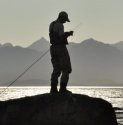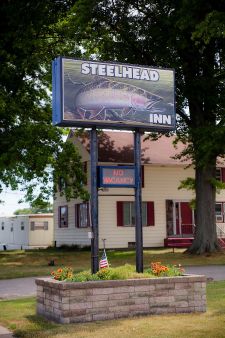Fd: You have been travelling for months in dream destinations. What can you tell us about fly fishing the famed Skeena and Dean rivers?
Adam: Even if these venues didn’t provide such prolific catches, I’d still consider them my favorite angling destinations. Elements contributing to a quality location are highly personal but, for me, mountains and wildness are essential. I like areas where humans vie with wolves and grizzlies for apex predator status. Places where logging hasn’t beaten back nature, where urbanity is nonexistent, and where rivers flow only through rocks, not concrete dams. Skeena country and the Dean are not pristine, but they do possess most of these traits.
Fd: What about locations other than your home province of British Columbia?
Adam: Internationally, I’m also attracted to places beyond roads; the dark areas in nighttime satellite photos of Earth. To date, my favorite two locations have been the steelhead waters of Kamchatka and dorado rivers flowing through the Andean foothills of Bolivia. Both regions are remote and wild, yet the small populations of indigenous people add a nice cultural dimension. I spent two seasons in Kamchatka working as camp director and guide for the Wild Salmon Center. The Bolivia expedition came together from an opportunity to organize a small group of my angling friends as guests of Tsimane Lodge. Given a chance, I’d happily return to either of these places.
Fd: Do you have any mentors or influences regarding photographic composition?
Adam: I keep an eye on quite a few photographers, but the work of Paolo Marchesi, Andy Anderson and Peter Leverman particularly resonate with me.
Fd: Lastly, what is it that you enjoy the most about your job?
Adam: My images come from two different photographic approaches. One is the “f/8 and be there” journalistic style that mostly requires being ready at the right place and time in order to capture an unplanned, fleeting moment. The other is conceptual; envisioning an image, then attempting to make that thought come to life. Either way, there is satisfaction in telling a story within one single frame that, hopefully, is impactful to the viewer.
Find more about Adam's work in his website: AdamTavender.com
















